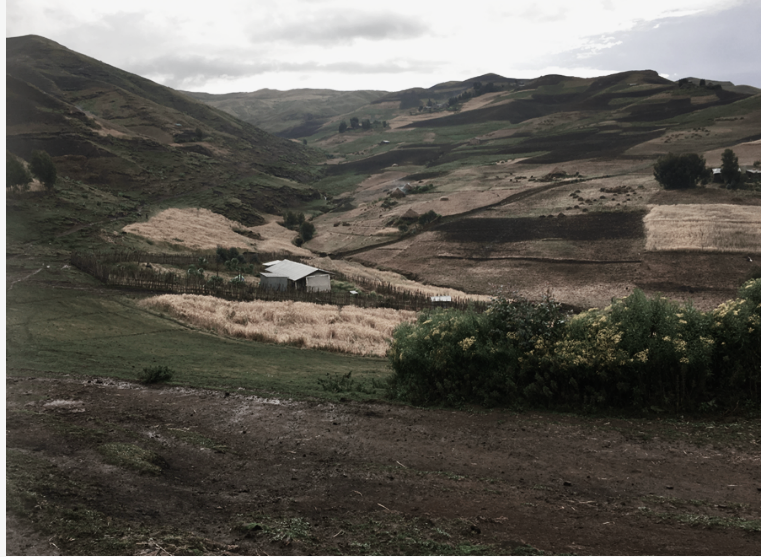Future Focus: Sidonie Matthew
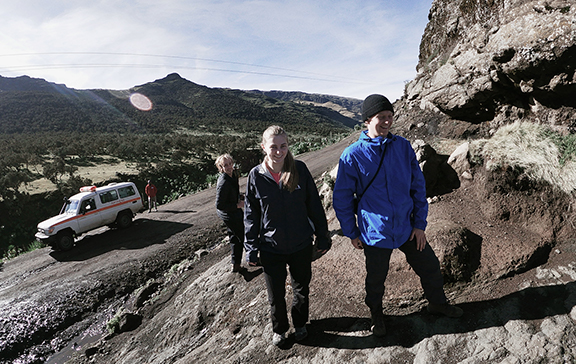
Sidonie Matthew was one of the five recipients to receive our FutureFocus grant for 2019 and at the time was a fourth year medical student from the University of Tasmania. Sidonie received $2 500 to put towards her overseas elective in Ethiopia. Her placement involved working in local hospitals, spending time in the hospital's fistula centre and camping in the Semien Mountains to provide medical treatment at the 24hr clinic.
Read a full account from Sidonie about her incredible journey below.
Ethiopia, 15 November to 11 December 2019
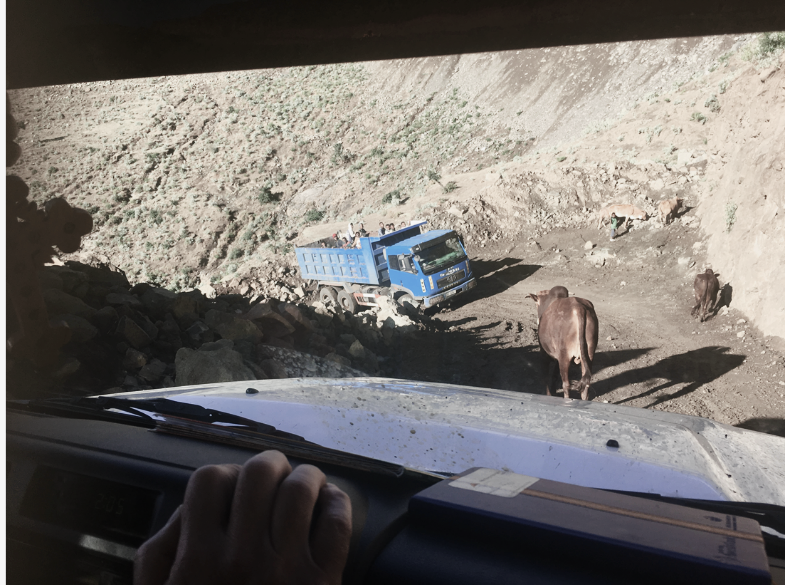 It almost felt as though I had not left Australia when I was picked up from Gondar airport in a Toyota ute. However, any illusion that I was still in Australia was quickly dispelled as the ute turned onto the main ‘highway’ and began overtaking goats, cows and donkeys. I embarked on my placement in Ethiopia with the purpose of learning about healthcare in a resource limited setting, to experience a unique culture and hopefully, become a part of an incredible community. Within five minutes of leaving the airport, it was clear this experience was going to be beyond anything I could have imagined.
It almost felt as though I had not left Australia when I was picked up from Gondar airport in a Toyota ute. However, any illusion that I was still in Australia was quickly dispelled as the ute turned onto the main ‘highway’ and began overtaking goats, cows and donkeys. I embarked on my placement in Ethiopia with the purpose of learning about healthcare in a resource limited setting, to experience a unique culture and hopefully, become a part of an incredible community. Within five minutes of leaving the airport, it was clear this experience was going to be beyond anything I could have imagined.
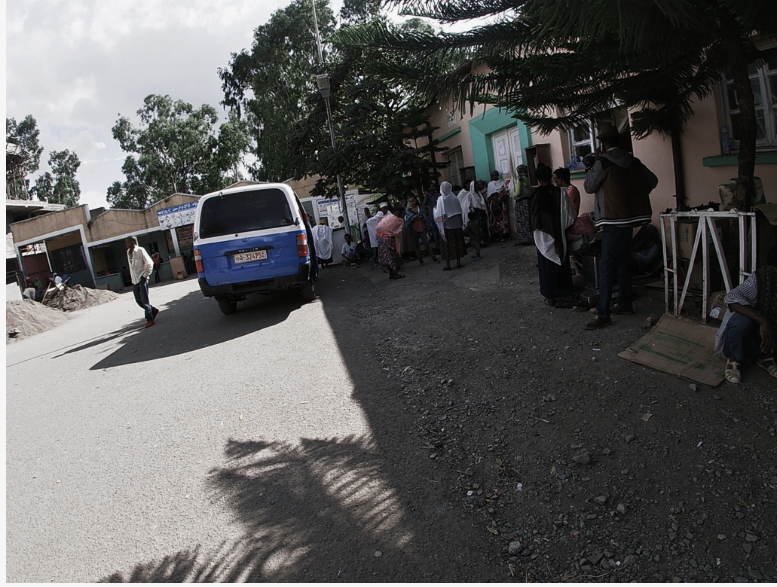
Gondar
Gondar was a vibrant, busy city. There was one particularly memorable afternoon when the local Gondar soccer team played a game against a neighbouring team. The city became covered in red and white (Gondar’s team colours) with locals selling t-shirts on the street and covering their shop fronts with red and white flags. There was an undeniable air of excitement which peaked after Gondar won the game. The streets became flooded with bajajs (three wheeled, motorised, tuk-tuk like taxis) with passengers leaning out of the sides, blowing air horns and chanting the team’s winning song. People were jumping out onto the road in the middle of the city centre to celebrate. A group of particularly passionate fans came running into the city centre (we found out they had run all the way from the soccer pitch which was located 3-4km from the town centre), chanting the entire way and waving flags. To say it was chaotic would have been an understatement, but their excitement was infectious and you could not help but share their joy and pride in their city. This sentiment of chaos combined with pride and community spirit was echoed throughout every experience I had while in Gondar.
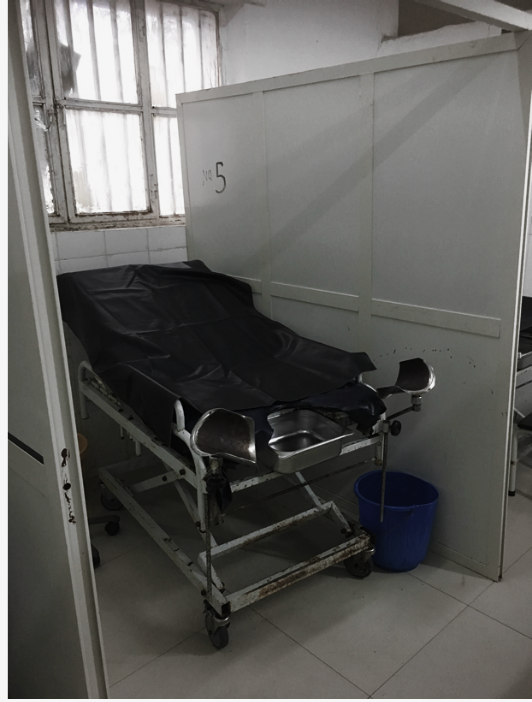
On my first clinical day in Gondar, I had the opportunity to attend the opening of a new Neonatal Intensive Care Unit at a nearby health centre known as the Miraki Centre. The opening ceremony involved lots of coffee (what else would you expect in Ethiopia) and popcorn, which was interesting but delicious. Local politicians were also in attendance. Personally, the highlight of the experience was being able to spend time with the local midwife students. Despite Amhara being the national language, health courses are taught in English, therefore many of the students had exceptional English. I learnt an enormous amount about the Ethiopian healthcare system, education system and attitudes towards health within the community.
The remainder of my time in Gondar was spent at Gondar University Hospital. This is the major tertiary hospital for the region. I primarily spent my time in the obstetrics ward (as I wanted to prepare myself as best as possible for any births in the mountains). I had been in the obstetrics ward for less than one hour when a lady came in. An intern explained to me that she was presenting 36 weeks pregnant without any antenatal care (despite antenatal care services being free, the travel costs associated with getting to a clinic is not, which is often a barrier for many women). Three things were immediately apparent. Firstly, she was in stage 3 (meaning she was ready to give birth almost straight away). Secondly, she was pregnant with twins and finally, the twins were in breech position (meaning the babies were positioned feet first rather than head first). Very rarely are breech births delivered naturally and it is preferable for a caesarean section to be performed due to the risks to both mother and baby. However, in this circumstance, due to the late presentation, there was no time for a caesarean section. The mother was quickly transferred from one of the labour beds into a birthing cubicle. The calm confidence of the consultant, despite the risks and challenges of this birth, was a testament to his skills and training. I feel so fortunate to have been able to observe the consultant skilfully deliver both twins safely without any major complications. I also have nothing but respect and admiration for the mother and all the women in Ethiopia as there is no access to pain relief during labour! Despite this, you barely hear a word of complaint from the women which is unbelievably impressive to say the least.
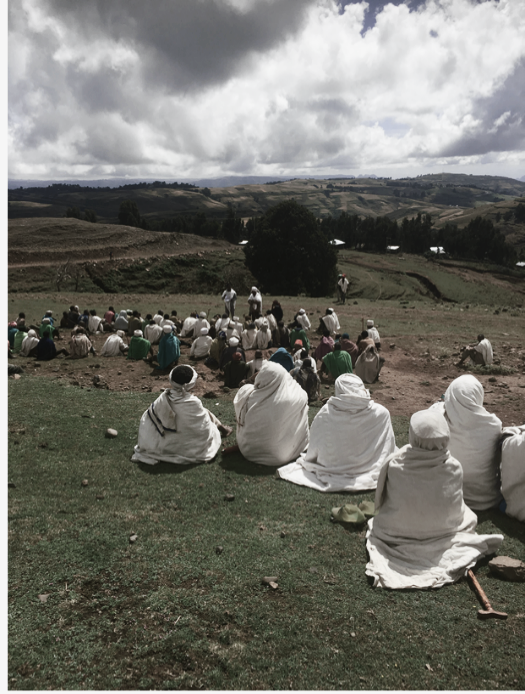 While at Gondar University Hospital, I also spent some time in the medical ward. It was very insightful to learn about the most common diseases in Ethiopia - stroke, chronic lung disease (due to cooking on indoor fires with poor ventilation), meningitis, pneumonia and tuberculosis. There was also a patient in the ward who had contracted anthrax and it was very interesting to learn about the pathophysiology and treatments of this rare condition.
While at Gondar University Hospital, I also spent some time in the medical ward. It was very insightful to learn about the most common diseases in Ethiopia - stroke, chronic lung disease (due to cooking on indoor fires with poor ventilation), meningitis, pneumonia and tuberculosis. There was also a patient in the ward who had contracted anthrax and it was very interesting to learn about the pathophysiology and treatments of this rare condition.
Debark
From Gondar, I spent a brief amount of time in Debark Hospital (which is approximately a three-hour drive away). This is the closest hospital to the Simien Mountains but significantly smaller than Gondar.
My trip into Keyit Clinic was delayed a night due to an overturned truck blocking the road. This turned out to be advantageous for me as it gave me the opportunity to travel with the Simien Mountains Mobile Medical Services (SMMMS) director as well as a visiting professor from Germany into other parts of the Simien Mountains and visit communities where the SMMMS has multiple clinics. It was a fantastic opportunity to speak with the clinic midwives and see the positive impact the clinics have on the communities. I also had the opportunity to see the SMMMS director speak at a community meeting.
Simien Mountains
The trip to the Keyit clinic was an adventure in itself. It began with a four-hour drive in the back of a 4WD ambulance with two of my colleagues.
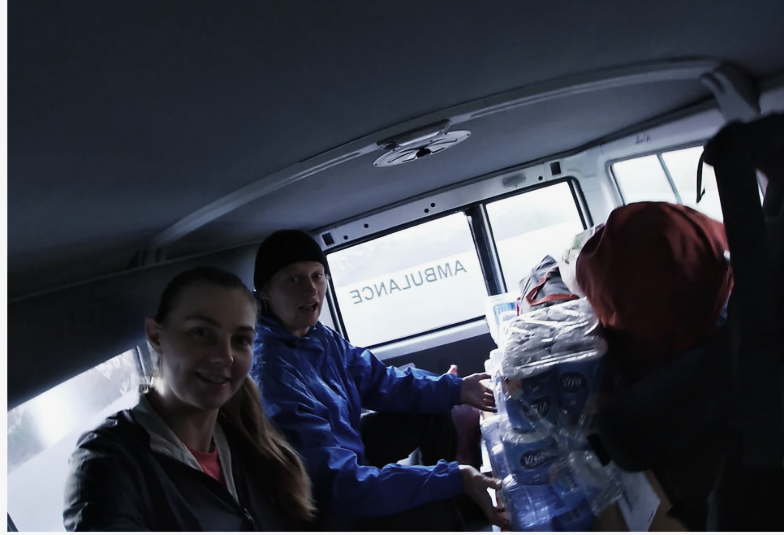 We packed the ambulance with medical supplies as well as our own supplies, including our tents, toilet paper and drinking water. Keyit itself is inaccessible by road so the second part of the journey involved loading a mule up with medical supplies, enlisting the help of some very kind locals to assist in carrying water and hiking for almost one hour. There had been a thunderstorm the night before which made this journey slippery and muddy. I considered myself relatively fit before heading to Ethiopia but hiking on a mud track and through creek crossings with a 23kg bag on my back at an altitude of 3500m proved to be a challenging hike. However, the local children who would see us and come running out of their houses yelling “salam” (Aramaic for hello) definitely lifted our spirits.
We packed the ambulance with medical supplies as well as our own supplies, including our tents, toilet paper and drinking water. Keyit itself is inaccessible by road so the second part of the journey involved loading a mule up with medical supplies, enlisting the help of some very kind locals to assist in carrying water and hiking for almost one hour. There had been a thunderstorm the night before which made this journey slippery and muddy. I considered myself relatively fit before heading to Ethiopia but hiking on a mud track and through creek crossings with a 23kg bag on my back at an altitude of 3500m proved to be a challenging hike. However, the local children who would see us and come running out of their houses yelling “salam” (Aramaic for hello) definitely lifted our spirits.
My accommodation at the clinic consisted of my tent and sleeping bag. This was far from luxurious - the lack of electricity and running water meant I did not shower for two weeks and would wake most mornings to find the zippers on my tent had frozen over. Despite the challenges, I felt that living at the clinic enabled us to truly feel a part of the community. We collected eggs from local farmers each day to eat for breakfast and enjoyed freshly baked bread from the village at lunch. Each night we would go to the village and Bethlehem (a lovely woman who lived in the village) would cook traditional Ethiopian meals for us including ful, injera and shiro. I felt that being a part of the community gave me experiences and insights unparalleled by anything I have experienced previously.
The clinic was open 24 hours a day, 7 days a week for emergencies. Thus, an additional advantage of camping next to the clinic was that we were present for these emergency cases. Each night, one of the clinic’s nurses was also on-call. One of the most memorable nights was when a woman presented in labour. It was 10:30pm when she presented. It was a very sleepless night for everyone involved. I assisted the midwife during the labour, whilst he performed an episiotomy via torch light and 20 of the woman’s family members waited patiently outside. The baby was born at 3:00am much to the delight and relief of everyone.
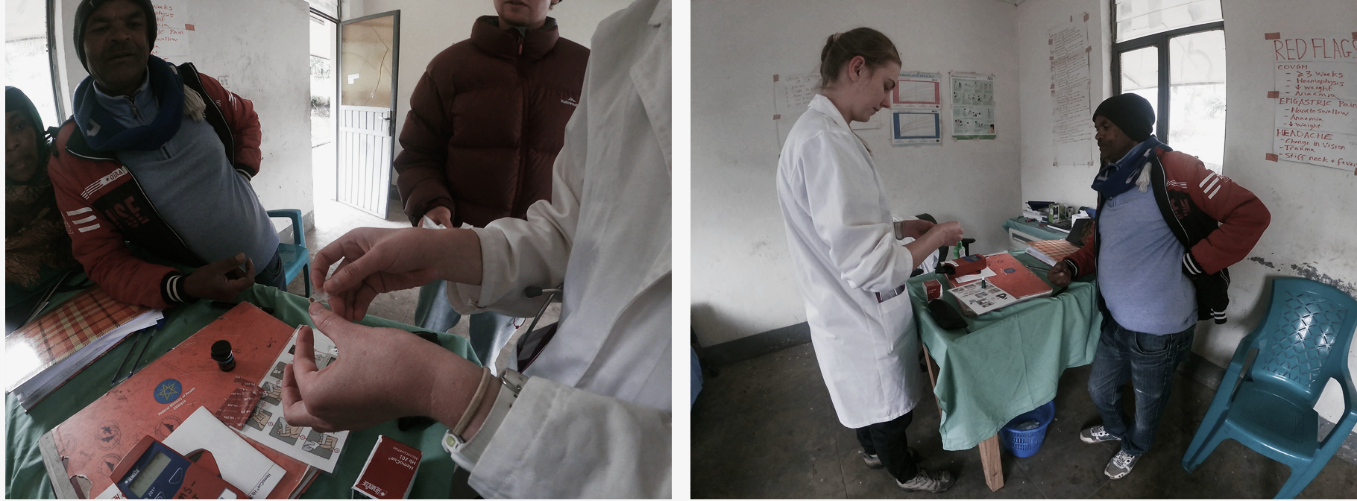
Challenges
Diagnostically, the Keyit clinic was equipped with dipstick for urinalysis, thermometer and sphygmomanometer. Therefore, the majority of diagnoses were determined purely based on history and examination. It was challenging to rely on these medical basics without access to investigative tools (e.g. imaging or pathology). Therefore, in discussion with the founders of the SMMMS, it would be extremely beneficial to put the grant money towards investigative equipment. The BOQ Specialist FutureFocus grant was incredibly valuable in facilitating the purchase of a Hemo-Cue (to measure haemoglobin) and a blood glucose monitor. The Hemo-Cue was particularly useful in the antenatal clinic with all of the women requiring iron supplementation. It was also useful to check for anaemia in patients who presented with fatigue or dizziness, or if we were suspicious of underlying diseases (e.g. HIV/AIDS). The glucose monitor was equally useful in pregnant women and to exclude underlying diabetes in presenting patients.
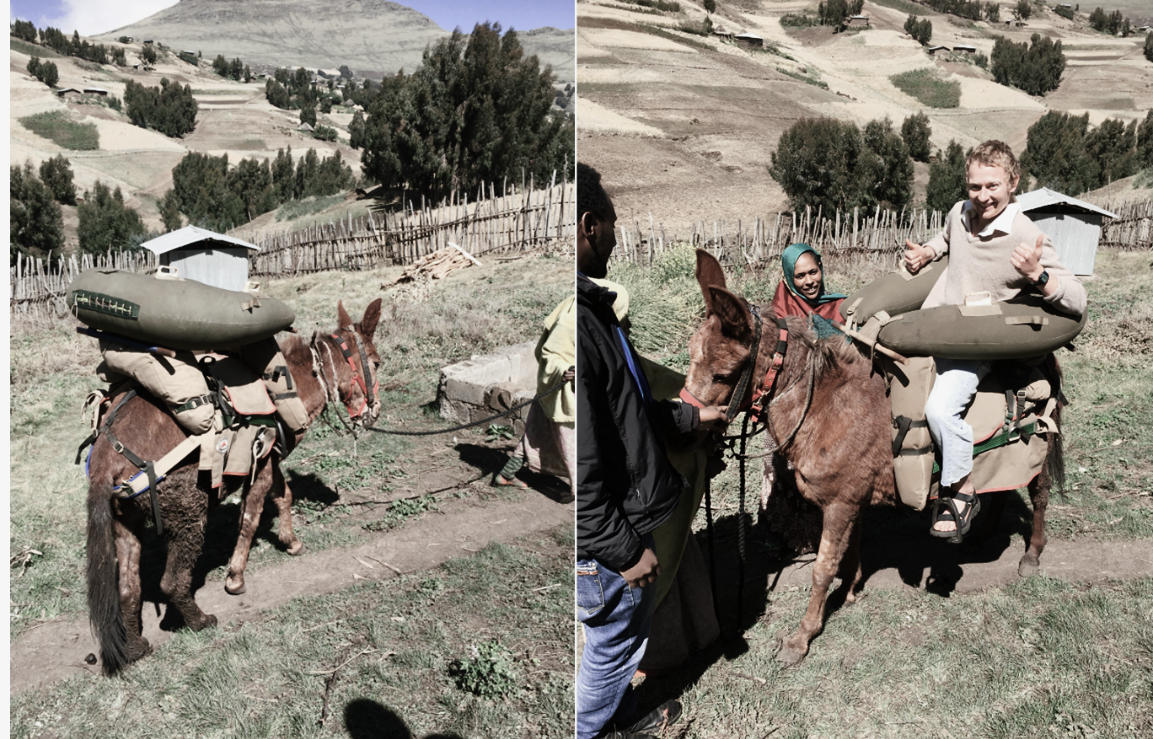
Exploring the Simien Mountains
Outside of the clinic, the Simien Mountains are an incredible place to explore. We were fortunate enough to visit nearby markets which occur every Saturday morning. People walk up to four hours with their livestock and produce to sell at the market. It was such a unique experience. The markets were packed with not just people but also donkeys, goats, chickens, cows, mules and horses. Aside from the markets, there were an abundance of mountains to hike.
During my exploration of the mountains I saw ibex, the gelada baboon and even a Simien fox. Exploring the mountains proved to be very challenging, especially with the altitude. After getting altitude sickness on one of the hikes, I opted not to climb anymore. Although I did not get to explore the mountains as fully as I had hoped, the areas that I did get to see were absolutely breathtaking.
Overall
Overall, my experience in Ethiopia is an experience that has undoubtedly shaped me both personally and in my future practice as a healthcare professional. The kindness, generosity and resourcefulness of the individuals and communities was inspirational. I am so grateful to BOQ Specialist for facilitating me to have this incredible experience and allowing me to contribute essential equipment to the clinic which future patients will benefit from. This trip has also strengthened my passion for outreach medicine that I plan to continue pursuing in the future.
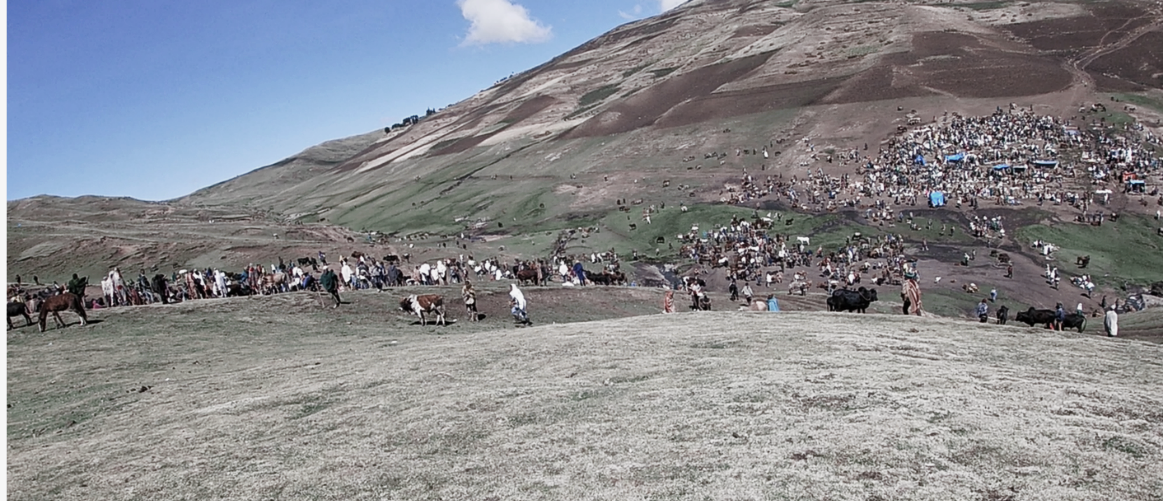
 Facebook
Facebook
Like and follow us on Facebook to keep up to date with all our student offers, events, competitions and more.
